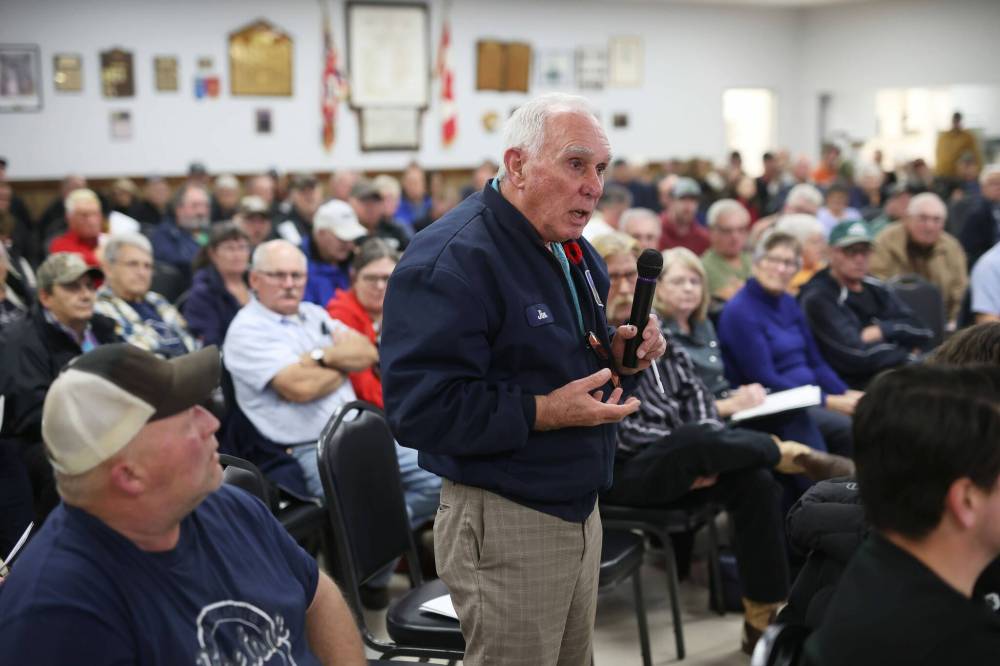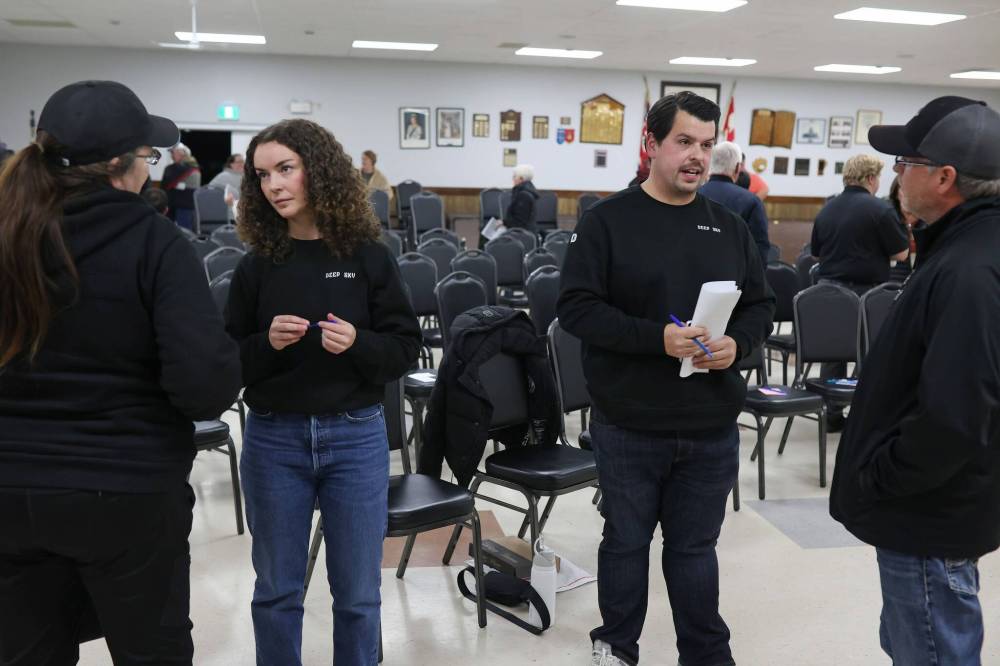Residents air concerns about Blue Sky carbon-capture facility
Advertisement
Read this article for free:
or
Already have an account? Log in here »
We need your support!
Local journalism needs your support!
As we navigate through unprecedented times, our journalists are working harder than ever to bring you the latest local updates to keep you safe and informed.
Now, more than ever, we need your support.
Starting at $15.99 plus taxes every four weeks you can access your Brandon Sun online and full access to all content as it appears on our website.
Subscribe Nowor call circulation directly at (204) 727-0527.
Your pledge helps to ensure we provide the news that matters most to your community!
To continue reading, please subscribe:
Add Brandon Sun access to your Free Press subscription for only an additional
$1 for the first 4 weeks*
*Your next subscription payment will increase by $1.00 and you will be charged $20.00 plus GST for four weeks. After four weeks, your payment will increase to $24.00 plus GST every four weeks.
Read unlimited articles for free today:
or
Already have an account? Log in here »
PIPESTONE — Residents were left with a lot of unanswered questions after a community-organized town hall in Pipestone Wednesday evening on a carbon-capture facility proposed for the area.
Montreal-based Deep Sky plans to build one of the largest facilities in the world in western Manitoba at a cost of about $200 million. The Rural Municipality of Pipestone and the Municipality of Two Borders have been described by the company as “promising” locations for the 100-employee facility.
The event included an informational video on carbon capture and prepared answers from Deep Sky that were read aloud by an organizer.

Jim Anderson of Melita asks a question during a community town hall on Wednesday evening to discuss concerns about the Deep Sky carbon-capture facility planned for the area. (Tim Smith/The Brandon Sun)
About 250 people packed the Pipestone Community Hall for the meeting.
“Our communities do not have the infrastructure to support the proposed massive influx of people Deep Sky promises,” said event emcee Keely Woods.
Woods asked municipal representatives — none of whom were in attendance — how council heard about the project, and why they didn’t tell the community earlier.
“People who live in rural communities do so for the lifestyle it brings,” Woods said. “We enjoy the slower pace of life, a connection to nature, more space, affordable housing, a lower cost of living, a feeling of safety, a sense of belonging to a tight-knit community that leads to strong relationships with neighbours who help each other.”
The proposed facility would be able to store up to 500,000 tonnes of CO2 per year once Phase 3 is complete, and 30,000 tonnes of CO2 in its first year. The company’s only other facility, in Alberta, has an annual capacity of 3,000 tonnes.
James Wilt, a policy manager with Climate Action Team, a coalition of environmental organizations in Manitoba, listed some major issues with the proposal.
He said there are no current examples of large-scale direct air-capture facilities in the world, that similar small facilities have faced problems after being set up, that it’s expensive and relies on companies buying CO2 offsets.
The startup makes money by selling credits to companies that create emissions and want to become carbon-neutral, offsetting the emissions they’ve created.
Shawn Day, the director of project development and community partnerships for Deep Sky, told the Sun that the company is still waiting on a feasibility study from Manitoba Hydro before announcing its final site, but reiterated that the two municipalities are preferred options.
He declined to answer questions about concerns regarding the impact of the project on the area’s water supply and its use of hydro power, saying the company is still working on “engineering specifics.”
He said those answers will come in the future.
Wilt said the current setup relies on future technology progressing well.

Keely Woods of Pipestone, with the informal Facebook group Grounded in Truth — Deep Sky Awareness (Southwest Manitoba), speaks with fellow community and area residents after Wednesday's meeting. (Tim Smith/The Brandon Sun)
“The claim that is made is that technical innovations — which have not happened yet — will reduce electricity demand,” Wilt said. “And so this is all essentially being pitched as innovations that we just have to sort of count on.”
Resident Kim MacKenzie said she’s concerned about how Deep Sky building in the area could “affect everything from the environment to our lifestyle.”
“We don’t have the infrastructure to handle what the supposed influx of people is going to be,” she said.
June Greggor, a resident from Reston, said even after attending the presentation, she doesn’t feel as if she knows what is happening.
“I’m hoping that there will be more (information) coming forward, and I certainly will be at the next meeting,” Greggor said after the presentation ended.
Kelvin Siemens, who lives in the nearby Rural Municipality of Wallace-Woodworth, said after listening to the meeting, he’s not sure carbon capture is ready to be implemented at a large scale.
“At this stage, it appears terribly inefficient and ineffective,” he said.
He said the lack of local government representation from either Two Borders or Pipestone was “extremely sad.”
“If you are an elected official, you should have the gonads to support what you think is the right thing to do,” Siemens said.
He said at this point, he isn’t sure if he would support Deep Sky building in the region, but with the information he does have, “why would you build this monstrosity?”
Kelly Taylor, who lives near Reston, said she was “quite disappointed” that no one from local governments showed up, but said the meeting was informative.

Kelsea Pedersen, project manager with Deep Sky, and Shawn Day, the company's director of project development and community partnerships, speak to area residents during the event. (Tim Smith/The Brandon Sun)
“I’m open-minded to anything that is going to, you know, bring jobs and be positive, but we still don’t know enough about it,” she said.
During a Q&A session, residents asked how their tax dollars will be used and how the company will be financially able to set up the largest carbon-capture facility in the world.
Two Deep Sky representatives who attended the meeting did not speak formally to the crowd, but they did say the company is not looking for municipal, provincial or federal funding.
They told residents to reach out with questions by email.
The company hopes to start construction in the third quarter of 2026, pending regulatory approval from the province. The goal is for the entire facility to be open no later than 2031, as the business would be able to capitalize on a federal tax credit.
The Manitoba station will use technology similar to large fans that will suck air from the atmosphere and use sorbent technology — like sponges — that will separate the CO2 from the air. It will then liquefy the CO2 and shoot it two kilometres down into saline aquifers.
Organizers gathered questions from people in attendance, saying they will forward them to Deep Sky.
» alambert@brandonsun.com
